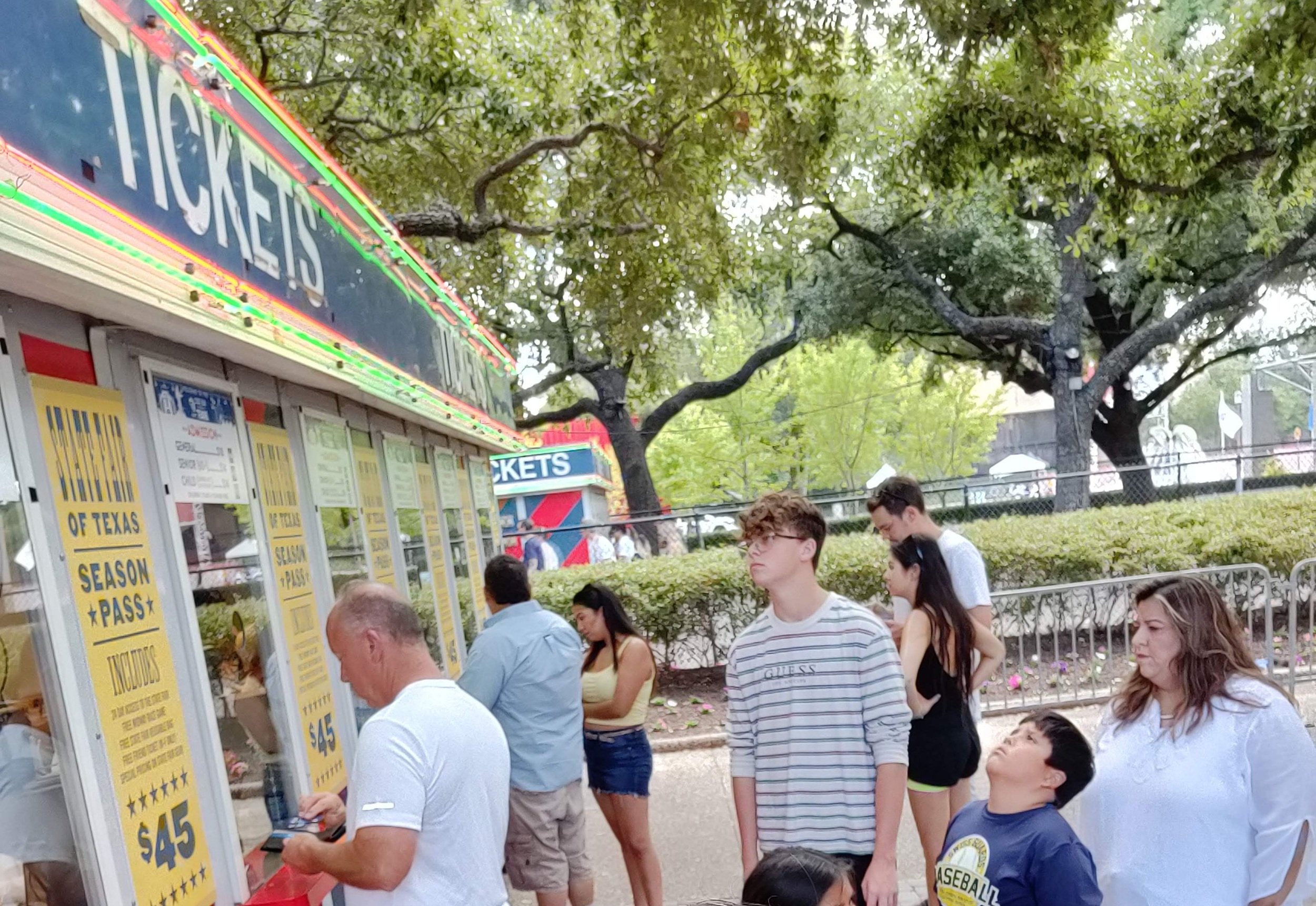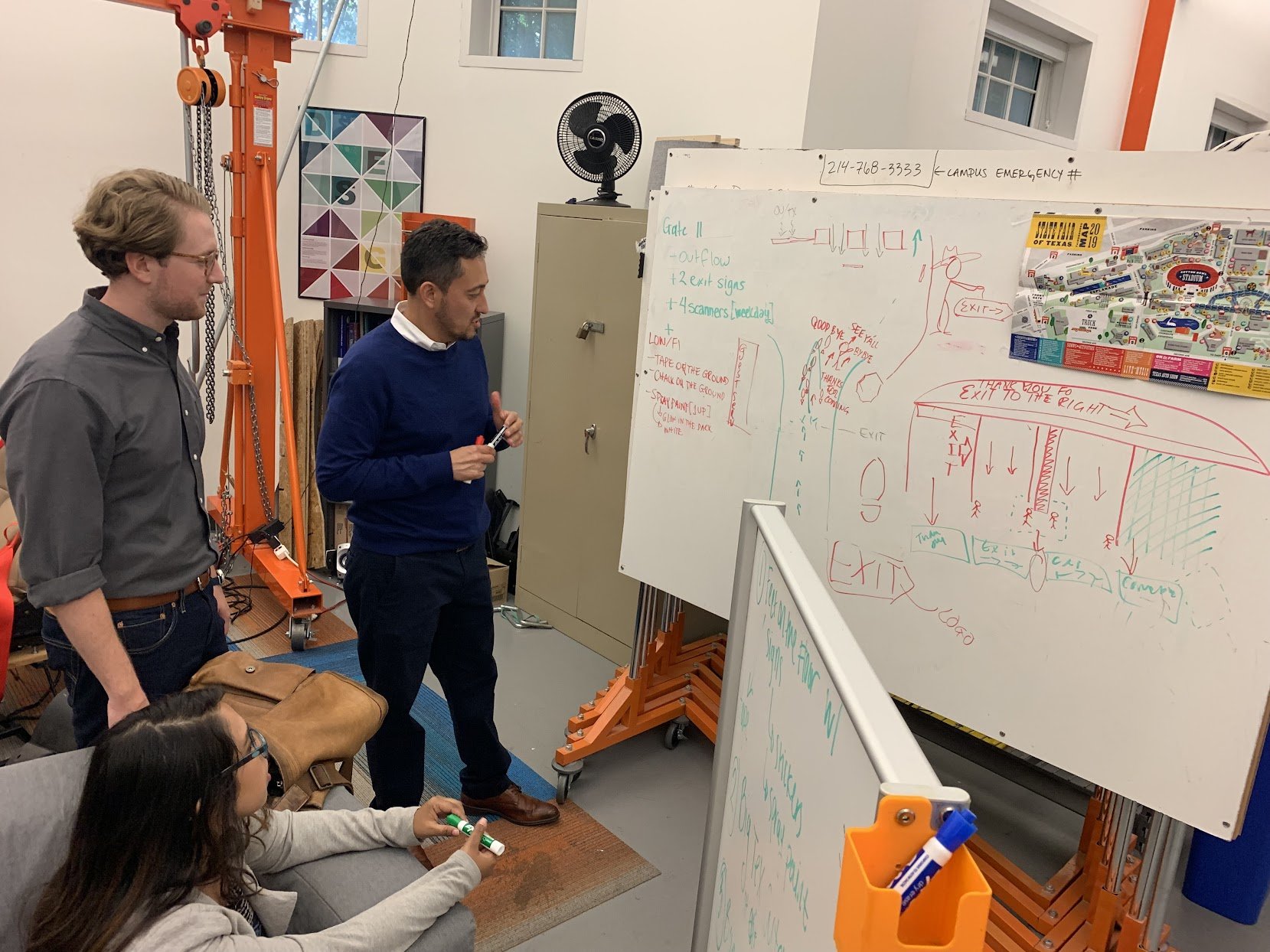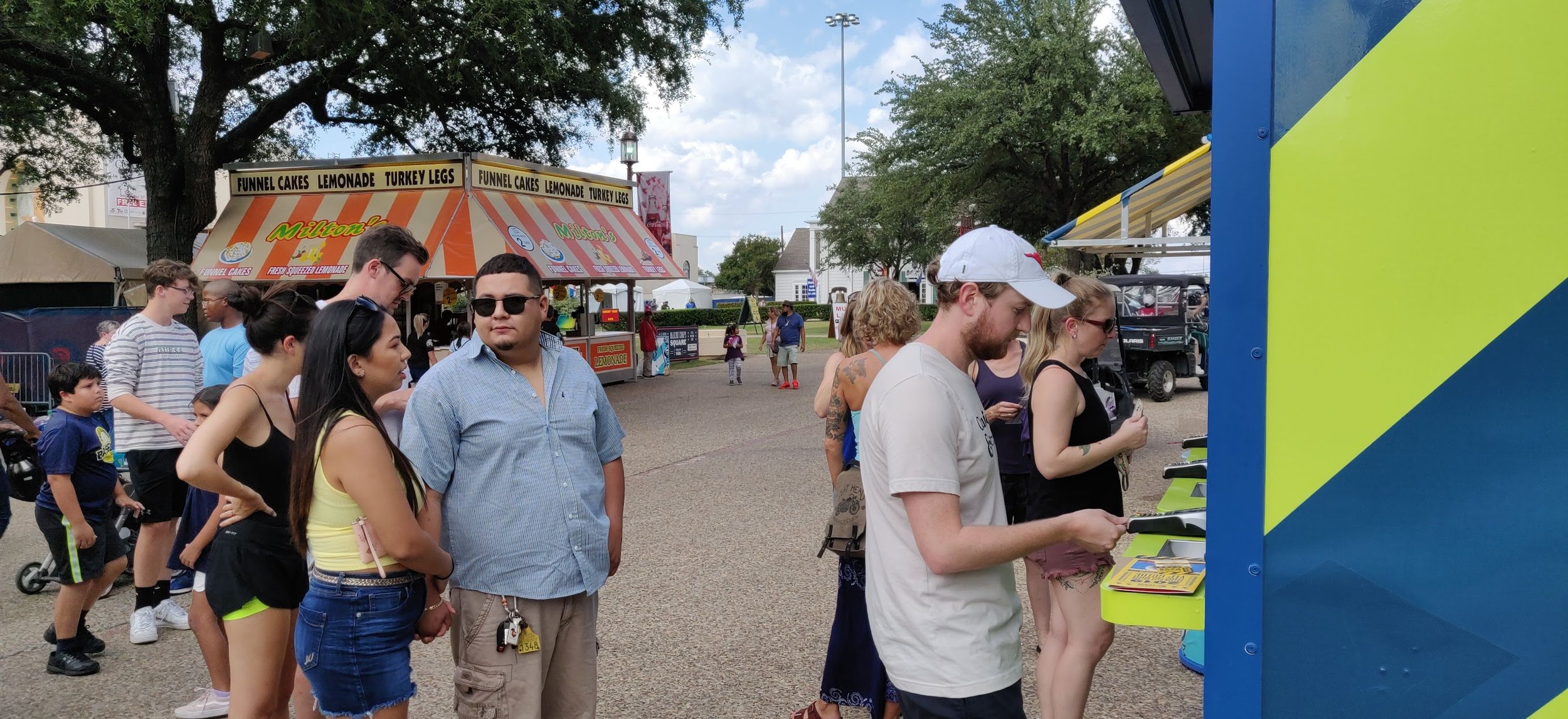
How might we improve the waiting experience at the Texas state fair.
Texas State Fair
The Texas State Fair is an annual event held in Dallas, Texas, USA, typically spanning 24 days from late September through to mid-October. It is one of the largest state fairs in the United States, attracting millions of visitors each year. The fairgrounds span over 277 acres and offer a wide range of attractions and entertainment, including live music concerts, carnival rides, games, and contests. One of the highlights of the fair is the Texas Star, a 212-foot Ferris wheel that provides a spectacular view of the entire fairgrounds and the city of Dallas. The Texas State Fair is a beloved cultural event that brings together people from all walks of life to celebrate the state's heritage and traditions.
Overview
Our team wanted to define what improving the State Fair experience meant and proceeded to use design practices such as field ethnography, environmental observations, 1-2-1, and group interviews. These design practices were a critical part of our research as we met with different stakeholders to frame the questions we were trying to answer. Throughout the initial research process, our team agreed that the employees were active participants of the State Fair experience. During our field observations, we confirmed that employees are not only the face of the State Fair brand, but have a direct influence on the experience of the people attending.
Our team landed on the following research question: How might we improve the waiting experience of the employees at Gate 11?
Connection improves experiences.
-

Understand it.
My role on the project was at the beginning in the service of navigating the space as a team and individually, to explore the possible opportunities that might present a tangible prototype worth testing. As a Spanish speaker I was able to approach individual stakeholders that provided insight on the experiences of the people and what interactions influence the waiting at the myriad of spaces on the site.
-

Plan it.
Our team acted on a hunch that improving the way of finding a specific exit to the site could alleviate an added burden to the employees that greeted and processed incoming patrons. During the stages of our process my role switched to rendering sketches for the planning of the interactions and prototyping visual signals for the space.
-

Prototype it.
I was able to manage resources and to communicate and synthesize the ideas of all of the team members while giving opportunity for everyone to pitch in equitably in all parts of the process.
Main roles: primary researcher, storyboarding and planning, low and high fidelity prototype co-creator, data analysis.
Solution
Our goal was to reduce the number of patrons exiting incorrectly at Gate 11, thus allowing the attendants to focus on the patrons entering. Through our data, our team deemed our prototypes successful as each prototype reduced the number of patrons exiting incorrectly. In addition, we interviewed the attendants afterwards who confirmed that our prototypes allowed them to focus on their job.


